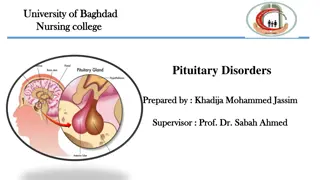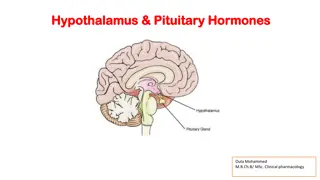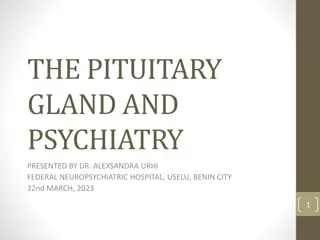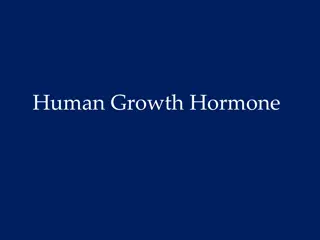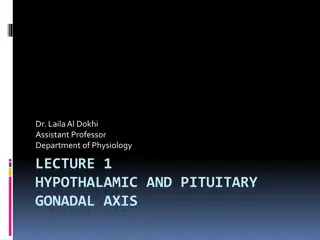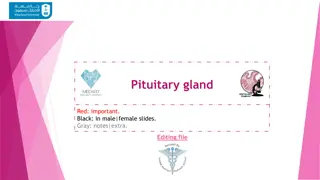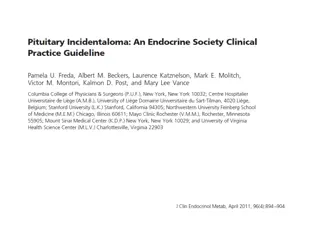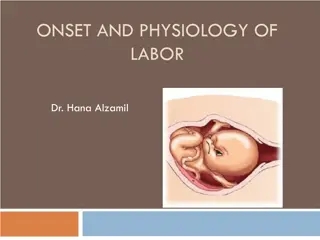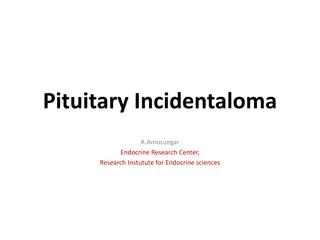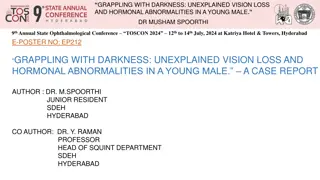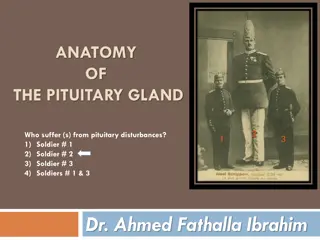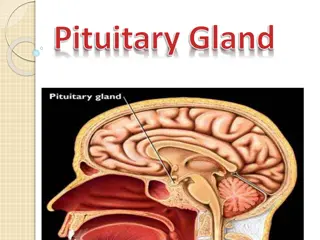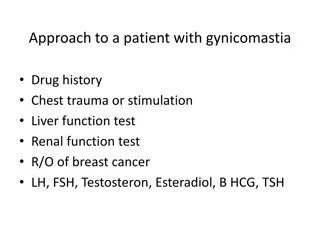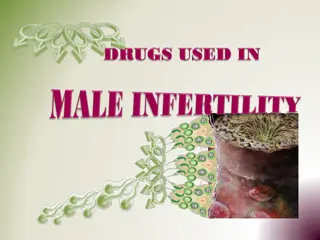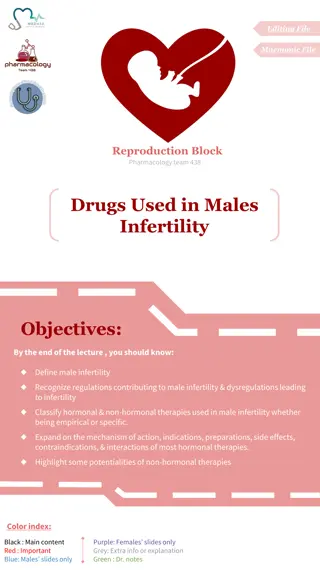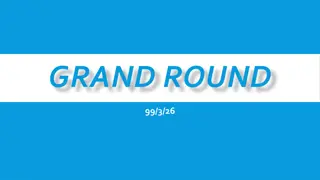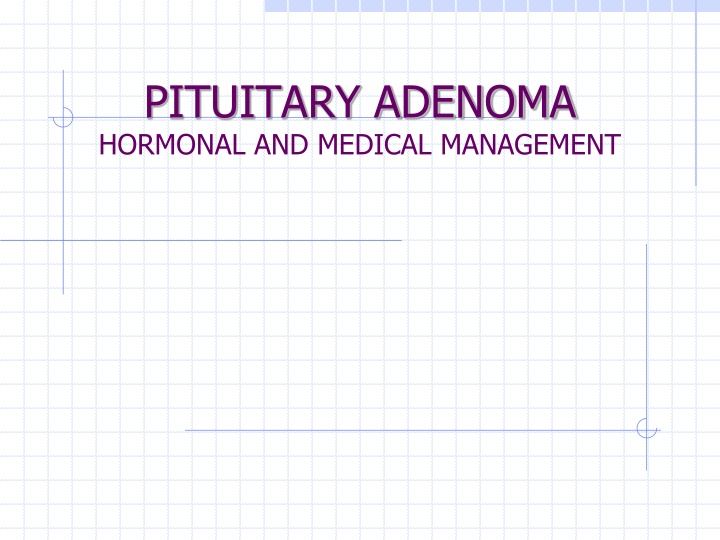
Pituitary Adenomas and Hormonal Management
Explore the classification of pituitary adenomas based on endocrine functions, learn about Cushing's syndrome versus Cushing's disease, and understand the evaluation and management of suspected Cushing's syndrome, including techniques for establishing hypercortisolism and ACTH dependency.
Download Presentation

Please find below an Image/Link to download the presentation.
The content on the website is provided AS IS for your information and personal use only. It may not be sold, licensed, or shared on other websites without obtaining consent from the author. If you encounter any issues during the download, it is possible that the publisher has removed the file from their server.
You are allowed to download the files provided on this website for personal or commercial use, subject to the condition that they are used lawfully. All files are the property of their respective owners.
The content on the website is provided AS IS for your information and personal use only. It may not be sold, licensed, or shared on other websites without obtaining consent from the author.
E N D
Presentation Transcript
PITUITARY ADENOMA HORMONAL AND MEDICAL MANAGEMENT
CLASSIFICATION OF PITUITARY ADENOMAS ACCORDING TO ENDOCRINE FUNCTION Adenomas With GH excess PRL excess ACTH excess TSH excess FSH / LH excess PLEURI hormonal adenomas Adenomas With No Apparent Hormonal Function
Cushings Syndrome vs. Cushing s Disease Cushing s syndrome is a syndrome due to excess cortisol from pituitary, adrenal or other sources (exogenous glucocorticoids, ectopic ACTH, etc.) Cushing s disease is hypercortisolism due to excess pituitary secretion of ACTH (about 70% of cases of endogenous Cushing s syndrome)
Evaluation Of Suspected Cushing`s Syndrome HISTORY: increased weight, growth retardation in children , weakness, easy bruising, stretch marks, poor wound healing, fractures, change in libido, impotence, irregular menses, mood changes EXAM fat distribution, hypertension, proximal muscle weakness, thin skin and ecchymoses, purple striae, hirsuitism, acne, facial plethora, edema.
Corticotroph adenomas Laboratory Evaluation Establishing hypercortisolism Distinguishing ACTH- dependent from ACTH independent causes of hypercortisolism Differentiating Cushing s disease from ectopic states of ACTH excess 1. 2. 3.
Establishing hypercortisolism Urinary free cortisol Sensitivity 45 71%,100% specificity Overnight dexamethasone suppression test or Low dose dexamethasone suppression test (Liddle test) (0.5mg qid 48 hrs) Cut off for serum cortisol < 1.8 mcg/dl ( 50 nmol/l). Sensitivity 95 % and specificity 88% Cushing s syndrome usually have levels >275 nmol/L (10 g/dL) Nocturnal Salivary Cortisol
Nocturnal Salivary Cortisol: 93% sensitivity,100% specificity. levels < 4.0 nmol/l, the diagnosis of significant Cushing s syndrome is unlikely 7 8 nmol/l are abnormal
Establishing ACTH Dependency Measurement of plasma ACTH levels ACTH level <1.1 pmol/L (5 pg/mL) by IRMA is consistent with an ACTH- independence Corticortroph adenoma :moderate elevation Ectopic ACTH producing lesion :marked elevation
Differentiating Cushings disease from ectopic states of ACTH excess High dose dexamethasone suppression test (2 mg qid for 48 hrs) and measurement of urinary cortisol/ 17- hydroxycorticosteroid Overnight 8 mg dexa morning serum cortisol CRH stimulation test. Metyrapone Test (inhibitor of 11 - hydroxylase)
Inferior petrosal sinus sampling Classical clinical and biochemical CD features with MRI negative patient equivocal suppression and stimulation test Diagnostic accuracy is 80-100% Blood samples are obtained at basal and 3,5,10 min after CRH administration and ips/ps ratio calculated ips/ps >3 CD ips/ps <2 ectopic rarely 2-3 ectopic IPS gradient helps in lateralization of adenoma
Cushings disease Indications for medical management: Failure of all other treatment modalities Preparation for surgery to relieve extreme symptoms Interval between RT and development of eucortisolemia
Drugs : Ketoconazole Aminoglutethimide Metyrapone Mitotane Etomidate Mifepristone Octreotide
Ketoconazole: First line drug 17 -hydroxylase, 11 -hydroxylase,18- hydroxylase, and especially 17,20-lyase enzymes are all blocked by ketoconazole 400 1200 mg/d (average 800 mg/d) effective in 70-100% liver toxicity 15%
Aminoglutethimide inhibits the first step in cortisol biosynthesis (cholesterol pregnenolone) Effective 50% 250-2000 mg/day Can be given with ketoconazole
Metyrapone Selective inhibitor of 11 -hydroxylase Effective in 85% doses of 750-2000 mg/d Acne, hirsutism
Mitotane Adrenocorticolytic effects and direct inhibition of steroid synthesis 2-4 g/day Effective in 80%,long term remission in 30% Higher response rate with concomitant pituitary irradiation Contraindicated in women planning for pregnancy within 5 years Side effects : gastrointestinal, hypercholesterolemia, adrenal insufficiency
Etomidate Life-threatening situations with severe hypercortisolism Oral dosing is contraindicated. Dose of 0.1 mg/kg/h Eucortisolism achieved within 11 48 h by using a continuous infusion
Mifepristone Major vegetative depression, suicidal ideation with hypercortisolism
Octreotide Ectopic ACTH source
Prolactin Function Serum prolactin levels ( normal 5-20ng / ml) Dynamic tests: not used if prolactin levels > 150ng / ml or tumor is found on MRI / CT used if prolactin levels are mildly elevated and MRI findings are equivocal Stimulation tests : TRH Chlorpromazine Metoclopramide Suppression tests: L-dopa Nomifensine
Prolactin < 25 ng/ ml : normal 25-150ng/ml: prolactinoma stalk effect drugs Hypothyroid > 150ng/ml : prolactinoma Hook effect even large elevations will show normal PRL levels on testing due to large size of molecules. Do serial dilutions
ELEVATED PROLACTIN LEVELS Physiological Pregnancy lactation Pharmacological psychotropic drugs Antihypertensives high dose estrogens Pathological hypothyroidism chronic renal failure hepatic diseases cushings disease
Prolactinomas Indications for bromocriptine therapy: Non invasive prolactinoma and serum prolactin level 150-500ng/ml Serum prolactin level >1000ng/ml Residual / recurrent prolactinoma following surgery
Criteria for cure: Normal prolactin level Asymptomatic Negative MRI study for 5 years If prolactin level is <100ng/ml and shows no tendency to rise is indicative of stalk damage
Prolactinomas Only pituitary tumor for which medical therapy has a proven primary role Observation Dopamine agonist Bromocriptine Cabergoline
Dopamine agonist Selective activation of D2 receptors located on lactotroph cell surface Decrease adenylate cyclase activity Decrease in C- AMP level Inhibition of PRL synthesis and release.
Dopamine agonists: Bromocriptine Cabergoline. Pergolide mesylate Lisuride Quinagolide Side effects GI intolerance, postural hypotension, constipation, nasal stuffiness
Bromocriptine: (2-bromo- -ergocryptine mesylate) Developed by Fl ckiger and colleagues in the late 1960s Purpose was inhibiting prolactin secretion without the uterotonic, vasospastic properties of other ergots
Serum levels peak after 3 h, and the nadir is observed at 7 h with very little bromocriptine detectable in the circulation after 11-14 h. The absorption rate from the GI tract is 25-30%. Very high first-pass effect, with 93.6% of a dose being metabolized and only 6.5% of an absorbed dose reaching the systemic circulation unchanged Excreted via the biliary route into the feces Levels in the fetus about one-fourth of that found in maternal blood start low dose at 1.25- 2.5 mg day at night before increasing to 2.5 10 mg per day in divided doses Take with food to reduce side effects
Cabergoline: more effective less side effects than Bromocriptine more expensive given once or twice a week with a starting dose of 0.25 mg 2 x week Titrate these based on prolactin levels and tolerability
Acromegaly Somatomedin-C (IGF-1) : always elevated in acromegaly GH levels:fasting state and after administration of stimulatory or inhibitory agents Stimulatory tests : Insulin induced hypoglycemia after IV administration of 0.1- 0.15IU/Kg of plain insulin GH level >5ng / ml indicates normal function it is avoided in elderly, those with cerebro vascular disorders or convulsive disorder Oral glucose suppression test: Failure of suppression of elevated levels of GH to < 2ng / ml after 75 gm glucose loading
Acromegaly Indications : Failure of surgery to normalize IGF 1 levels Awaiting the beneficial effects of RT Unresectable tumors
Drugs : Somatostatin analogues Dopamine agonists GH receptor antagonist - Pegvisomant
Limitations : Cost Inability of tumor shrinkage sufficient to relieve any mass effect
Somatostatin analogues: Octreotide :45 times more potent. half-life in plasma being 113 min peak plasma concentrations within 1 h suppress GH levels for 6 12 h Mechanism of action Inhibit GH secretion partially inhibits GH-induced IGF-1 generation simulates IGF-BP1 expression reduce GHRH release
Clinical improvement- headache 84% hyperhydrosis 65% decrease in ring size in 55% improvement in cardiac function and sleep apnea
Octreotide (S/C) 100 to 500 mic.gm TDS Octreotide LAR (I/M) at 28 days interval Lanreotide (I/M) every 7-14 days Pegvisomant GH REDUCTION 47% 56% 50% Not useful IGF1 REDUCTION 46% 66% 48% 97% Freda PU:clinical review 150:somatostatin analogs in acromegaly.j clin endocrinol metab 87:3013-3018,2002
Dopamine agonists : Used both as primary and adjuvant treatment Bromocriptine up to 20 mg/day Cabergoline 1 2 mg/week Response rate low
Dopamine agonists : Bromocriptine Cabergoline GH REDUCTION 20% 44% IGF1 REDUCTION 10% 35% Freda PU:clinical review 150:somatostatin analogs in acromegaly.j clin endocrinol metab 87:3013-3018,2002
GH-Receptor Antagonist : Pegvisomant : Check IGF 1 level every 4-6 weeks Monitoring GH not useful Dose 10-40 mg/d
Thyrotropic Function T3 , T4 , TSH levels If TSH levels are normal in the presence of low T3 / T4 levels then TRH reserve is tested 200 micro grams of TRH is given IV if TSH is elevated to > 6-20 micro units / ml : normal absence of response : total hypophysectomy Decreased response: thyroid hormone therapy glucocorticoid therapy Hyperthyroidism renal failure depression
Thyrotropin secreting adenomas Somatostatin analogues:>90% respond Dopamine agonists:Bromocriptine:20 % respond
GONDOTROPH FUNCTION CRITERIA : Absence of other hormonal abnormality Elevated basal and stimulated response of gonadotropins
DIABETES INSIPIDUS Polyuria secondary to water diuresis and poly dipsia Due to low levels of ADH High output of dilute urine Craving for water, especially ice cold water Incidence 9.2% in micro adenoma surgery 37% in case of total hypophysectomy Mostly due to extreme sensitivity of hypothalamic neurohypophyseal unit to local alterations in blood flow, edema and traction on pituitary stalk and is transient Permanent disturbance of ADH secretion direct damage to neuro hypophyseal unit
Types of presentation Transient polyuria starting 1 3 days after surgery and lasting for 1 7 days ; local edema and traction on pituitary stalk Triphasic response polyuria beginning 1 2 days after surgery lasting for 4 5 days normalization of urine output / SIADH like water retention 4 5 days return of polyuria Transient polyuria begining immediate post op Permanent polyuria beginning immediate post op and continuing without any interphase
DIAGNOSIS: Urine output >250ml/hr (>3ml/kg/hr in pediatric patients ) Urinary s.g. <1004 Urinary osmolality <200mosm/kg Normal or above normal serum sodium level Normal adrenal function
Depends on : pts clinical status urine volume Concentration of serum electrolytes Creatinine If alert, with intact thirst, mild DI, pt can self regulate water intake DDAVP nasal spray 2.5micro gm BD If thirst mechanism is impaired meticulous I/o records daily wt measurement frequent electrolytes , urea , hematocrit supplementation of free water vasopressin analogues
If consciousness is impaired hrly I/o, urinary specific gravity 4 hrly electrolytes parenteral fluids titrated dosages of desmopressin 2 4microgm IV/SC in 2 divided doses
Chronic DI Rare in c/o trans sphenoidal surgery Treatment of choice is DDAVP Other drugs : clofibrate 500mg 2 4 times/d chlorpropamide 50 500 mg/day carbamazepine 400 600mg/day
SIADH Less common Causes : preop medications anaesthetic agents surgical stress surgical irritation of neurohypophyseal unit

